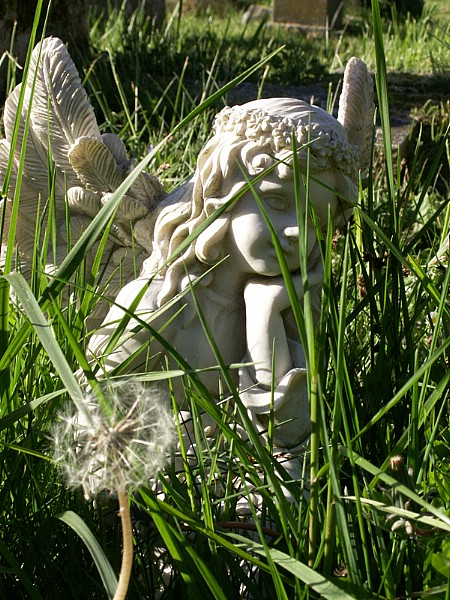Do Not Stand by my Grave and Weep – May 2006
Do not stand at my grave and weep
I am not there; I do not sleep.
I am a thousand winds that blow,
I am the diamond glints on snow,
I am the sun on ripened grain,
I am the gentle autumn rain.
When you awaken in the morning’s hush
I am the swift uplifting rush
Of quiet birds in circled flight.
I am the soft stars that shine at night.
Do not stand at my grave and cry,
I am not there; I did not die.
Almost certainly Mary Frye wrote the famous poem ‘Do not stand at my grave and weep’ in 1932. Originally the verse had no title, so the poem’s first line, ‘Do not stand at my grave and weep’ naturally became the title by which the poem came to be known.
Mary Elizabeth Frye (1905-2004) was a housewife from Baltimore USA, when a visiting friend’s mother died, and this prompted Mary Frye to compose the verse, which she said was her first real attempt to write poetry. The friend was a young German Jewish girl called Margaret Schwarzkopf, who felt unable to visit her dying mother in Germany due to the anti-Semitic feeling at home. She commented to Mary Frye that she had been denied the chance to ‘stand by her mother’s grave and shed a tear’. This was the inspirational prompt for Mary Frye to write the verse, which has for decades now touched and comforted many thousands of people, especially at times of loss and bereavement.
Mary Frye, it is said, wrote the poem on a brown paper shopping bag. Apparently in interviews since writing the poem she said that the ‘words just came to her’, and it also seems clear that she wrote her poetry to bring comfort and pleasure to others, rather than to profit from its publication.
It’s fascinating that the poem came into such widespread use, and this is perhaps because it was not conventionally copyrighted and published. At some time after Margaret Schwarzkopf’s mother’s death, friends of the Schwarzkopf family arranged for a postcard to be printed featuring the poem, and this, with the tendency for the verse to be passed from person to person, created a ‘virtual publishing’ effect far greater than traditional printed publishing would normally achieve. The poem, in its various ‘original’ forms has for many years been firmly in the public domain.
This information was obtained from businessballs.com

